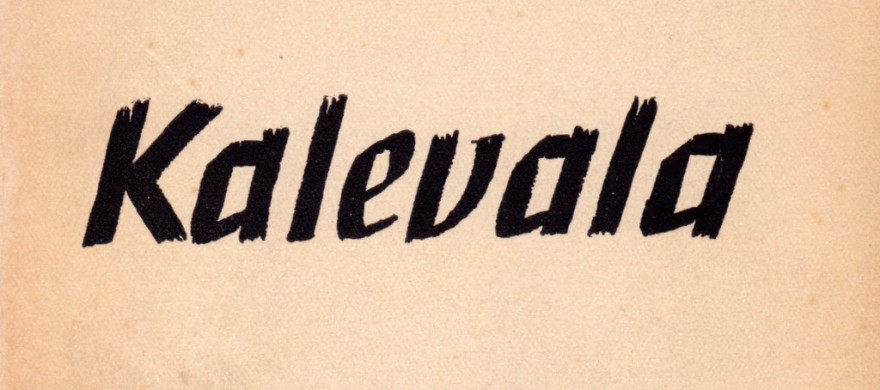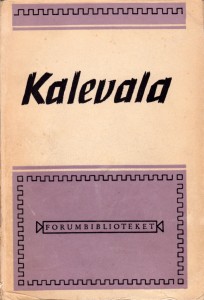Björn Collinder 1948
Björn Collinder (1894–1983) was a Swedish linguist and professor in Finno-Ugric languages at the university in Uppsala. Already as a young student his hobby was to translate ancient Scandinavian poetry into Swedish. Later he published Swedish versions of, among others, plays by the Beowulf and Shakespeare as well as the Poetic Edda.
Collinder tells us how he originally came to know the Kalevala:
“The Kalevala is among the earliest literary works that I learned to know. As many other Swedes in my age, and older Swedes as well, I binged the book Kalevala kerrottuna nuorisolle (in English: The Kalevala for young people) by Rafael Hertzberg. I was particularly fascinated with the adventures of Lemminkäinen, but also the episode about Kullervo made a profound impression on me. In contrast, I did not really care for the story of Sampo, except for the description of the actual forging of the wondrous tool, which was immensely fascinating for a child with a vivid imagination. The illustrations by R. W. Ekman must have affected me in a unique and deep way, since I still, after forty years, remember them very well. Many children in Sweden have learned to know the Kalevala by reading the prose version by Elsa Dahlström in which the end rhymes by Hertzberg and the plain translation by Collan have been scattered here and there.”
When Björn Collinder started to translate the Kalevala, more than ten Swedish translations of it had already been published: most of which were excerpts or word-by-word texts, but there were poetic translations as well. Why do we need new Swedish translations?
“The reason for this is, I guess, the fact that Collan’s translation in several ways has the same influence as the kantele music performed by Väinämöinen in Pohjola”, Collinder suggested in his text from 1946. He wanted to use the Kalevala poetic meter and the alliteration in his own translation.
In his article from 1957, Collinder reflects upon the general feeling that translating is something intimidating:
“Schopenhauer has said that first of all, it is not possible to translate poems – they may be retold in the form of new poems. Translating a text word-by-word is also as daring as changing the key in a piece of music. Wilhelm von Humboldt wrote in one of his letters to A. W. Schlegel that everything you try to translate seems to be an attempt to do something utterly impossible: the translator either follows the original at the expense of fluency and his/her mother tongue or the translator holds on to the special qualities of his own people at the expense of the original, there is no middle ground.”
Björn Collinder viewed the Kalevala in a Scandinavian context, as a narrative of the Viking Age and he translated it as such. He borrowed bits and pieces from the ancient Norwegian language as he, according to himself, was “a researcher of the Edda and a supporter of Rydberg’s efforts to purify the language”.
Björn Collinder: ”Kalevala ja Ruotsi” – Kalevalaseuran vuosikirja 25–26. Helsinki: WSOY. 1945–1946.
Björn Collinder: ”Kalevalaa kääntämässä” – Kalevalaseuran vuosikirja 37. Helsinki: Helsingin liikekirjapaino. 1957.

